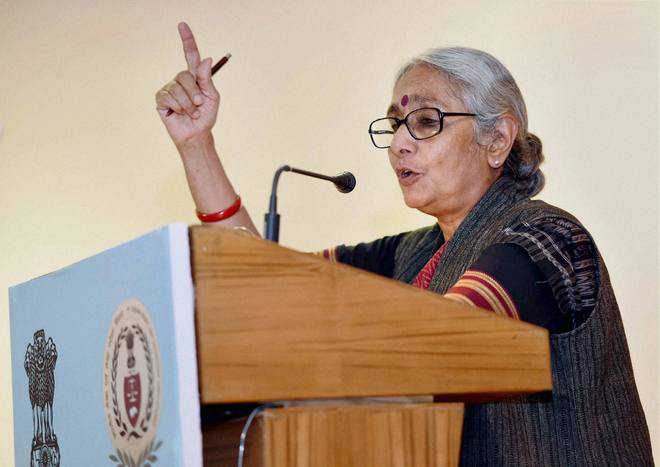
A long road: Aruna Roy writes about campaigns, protests, and negotiations that went into the making of the RTI Act
Gaurav Kanthwal
RTI, the master key that unlocks every almirah of a government office where information concerning citizens is tucked away from the prying eyes, is a preserve of the determined lot. It empowers citizens to fight corruption, but it does not guarantee instant success. Governments, by their very nature, like the power to control.
Over the years, sections of political class and battle-hardened bureaucrats have found ingenious ways to trash RTIs. A minor lacuna in an application is enough to give them months of reprieve. They may share the innocuous information readily, but the one that may cause serious repercussions will be well guarded. Ultimately, the one with a better resolve — the information seeker or giver — wins the RTI bout.
Between 2005 and 2016, a total of 1.75 crore RTI applications were filed. Almost 50-60 lakh people make use of this law each year. However, there has been a six per cent decline in the number of applications in the past two years. But, this isn’t anything new. The act has faced and overcome several challenges. The latest being the government’s proposal to dilute the status of the Central Information Commissioners (CIC) by downgrading them to the level of Government of India secretaries from that of Supreme Court judges.
The RTI Story, a book by Aruna Roy and her Mazdoor Kisan Shakti Sangathan (MKSS) associates, traces the journey of 18 years, (1987-2005) beginning from Devdungri in Rajasthan to Sohangarh and then to an endless series of defiant campaigns, including protests, demonstrations, confrontations, persecutions, negotiations and formulation of the RTI Act in 2005.
Roy’s 375-page book compiles successive events that lead to the enactment of the RTI Act (2005). As the reader delves deeper, the determination and resolve of ordinary people to fight for their legitimate rights emerge as the leitmotif of the book. The author deftly chronicles the events, but her focus remains on narrating the heroic tales, and through them, conveying the power of the collective.
Every chapter is a story of ordinary villagers standing against the excesses of a contractor. The book also encapsulates first-hand experiences, journals, surveys, publications, news reports, PhD thesis, editorials and op-eds that explain the significance of the act.
For readers, it can prove to be a formidable read and can veer towards boring as well. However, for someone who wants to know about the government machinery and what ails it, the book serves as a guide. A pithily written foreword by Gopalkrishna Gandhi explains the need for transparency, the power of knowledge, and its ability to bring about a social change.
Aruna Roy, in the conclusion, asserts that the RTI is much more than a tool to fight corruption. It is a fundamental and transformatory right against the arbitrary use of power. The book will be appreciated by research scholars, social activists, politicians and bureaucrats who are interested in understanding the value of social justice. It is not a didactic literature per se, but enriches the reader with ample interesting first-hand experiences.



























